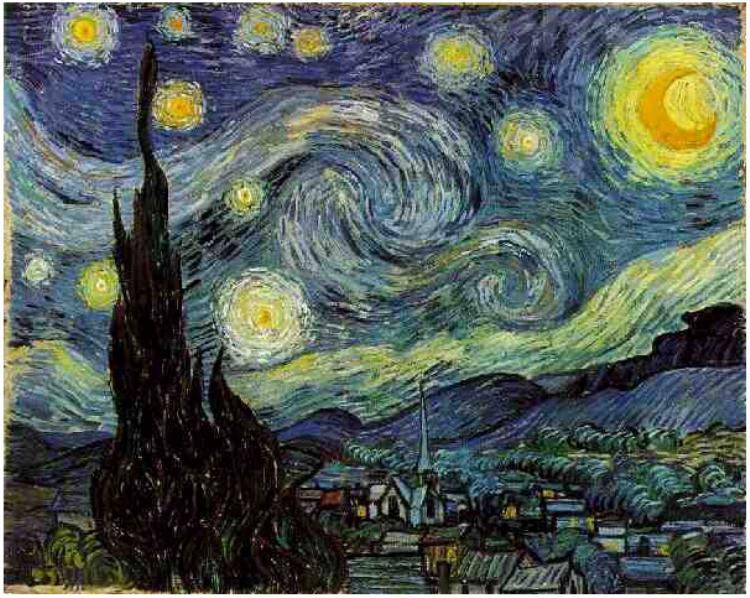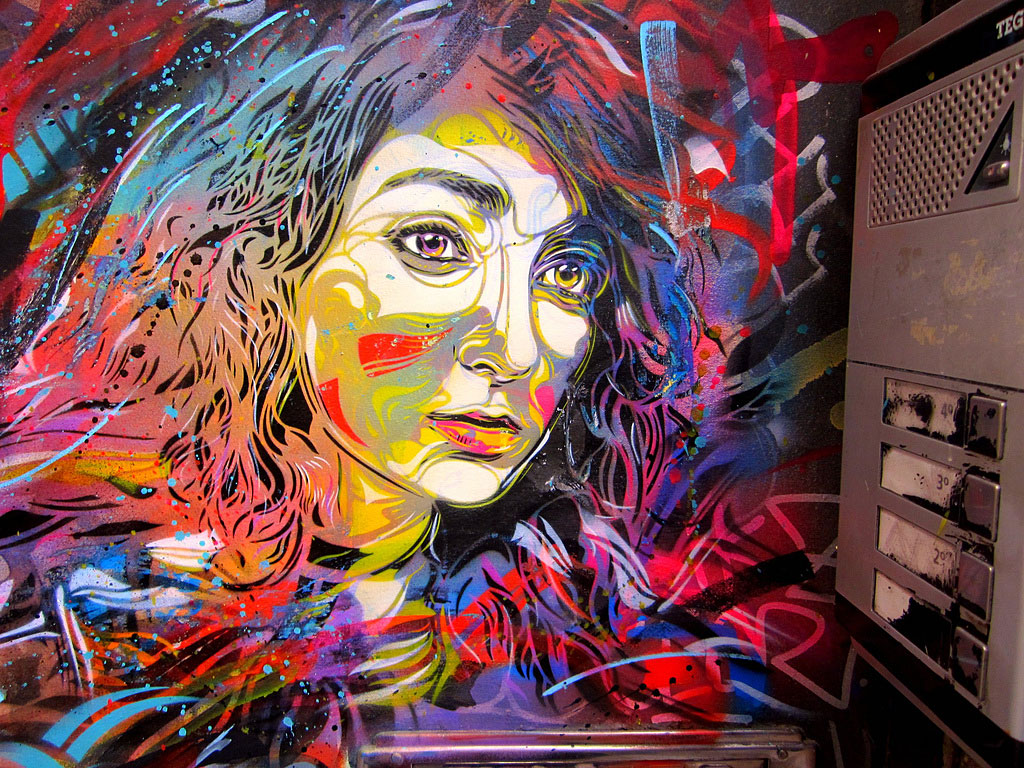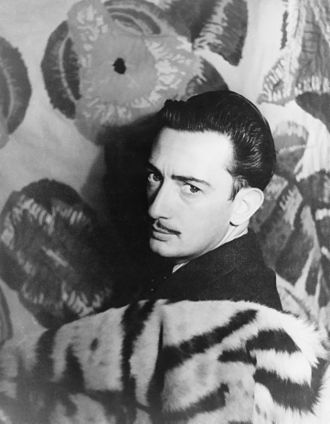The Life and Death of Vincent van Gogh
I don’t feign any propensity towards art or artists in general. I am far more comfortable with keystrokes than I am ever gonna be with brushstrokes. But in spite of my apparent ignorance of anything remotely related to paintings, there is one painter who has had a profound impact on me through his inimitable paintings and his life in particular. That painter is no other than the great Dutch post-impressionist painter, Vincent Willem van Gogh.
Van Gogh was born in a family of theologians and art-dealers in the Dutch village of Groot-Zundert in the spring of 1853. He grew up in a seemingly happy environment as the eldest of two brothers and three sisters, although it was his brother Theo with whom he shared a deep fraternal bond that lasted his entire lifetime. But behind the facade of a happy family, Van Gogh himself grew up as a brooding child and he retained this gloomy nature all throughout his life.
Van Gogh began drawing from an early age and although they were commendable, they still were nothing to write home about. Besides, very few of the watercolours he did as a child remain to confidently opine on their quality. It was only when he was in the latter half of his twenties that he started painting in all seriousness, and considering that he lived only up to the age of 37, the more than 2100 artworks that he produced during this period goes on to show what an avid painter he had been. How and why this sudden transformation happened and a man who was well on his way to become a pastor keeping up with his family tradition decided to become a painter, is a question only Van Gogh himself could have answered. It could have been his repeated failures at clearing the exams related to theology or it could just have been at his brother Theo’s advice, but whatever the reason may be, it was in 1880 that Van Gogh finally enrolled in the Acadmie Royale des Beaux-Arts in Brussels and his journey to become one of the greatest painters in history began.
But before embarking on a discussion on Van Gogh’s artistic achievements, we must get a glimpse in to Van Gogh, the man. The fact that he had a bleak view of life and turned from a God-fearing person to an atheist can be attributed not only to his sombre childhood but also to his continuous failure in love.
Van Gogh seemed to be headed towards a content life when he moved to 87 Hackford Road at Brixton at the age of 20. But then he fell in love with his landlady’s daughter and the realization that his love was unrequited broke his heart and made him a pessimist. Later in 1881 after he had moved to Etten, he fell deeply in love with his widowed cousin, the daughter of his mother’s elder sister, who too rejected him. A year later he started seeing a pregnant prostitute, Sien. The relationship was apparently impossible to maintain, considering Sien’s background and Van Gogh’s nature, and he left her and her two children in the autumn of the following year and returned to his parents who were staying at Nuenen. Curiously, Sien was the model in Van Gogh’s highly acclaimed work “Sorrow” of which he drew many versions of which only two remain to this day. Van Gogh later had a tryst with a neighbour’s daughter at Nuenen but that too ended in tragedy when she attempted suicide, and that is the last time that Van Gogh is known to have tried his luck at love. Broken-hearted and depressed, he turned to his paintings and prostitutes for solace.
Coming back to his paintings, Van Gogh’s first major work of art is considered to be “The Potato Eaters” which he drew in 1885 after years of carefully studying peasant life. The sombre coloured paintings he made during this period are starkly different from his later vibrant works, which he created after coming in contact with the French impressionists. In the winter of that same year, Van Gogh moved to Antwerp where he studied all forms of painting starting from the works of Rubens to the Japanese Ukiyo-e woodcuts and their effects showed in his own paintings as well. But Antwerp was also where the decline in Van Gogh’s health started as a bout of syphilis and a continuous abuse of absinthe took a toll on his body.
Van Gogh moved to Paris in 1886 and the next two years turned out to be historic as Van Gogh the painter, as we know him today, gradually emerged from the shadows as he mingled with the great impressionists of that time and was deeply influenced by Monticelli’s works. That was also where he befriended Paul Gauguin, who along with Van Gogh, is considered to have had a major hand in ushering in the post-impressionist era. The impact that the impressionists had on Van Gogh can be gauged from his works during this period which include Seascapes at Saintes-Maries and Bridges across the Siene at Asnieres.
Although Van Gogh had a significant number of paintings to his name by the time he left Paris for Arles in 1888, ironically it was during these last couple of years of his life, as his health deteriorated and his insanity increased, that he painted his most well-known works till date that included “The Night Caf” “Starry Night over the Rhone” and “Still Life: Vase with Twelve Sunflowers” Enthralled by the sunny climate and the now famous Yellow house where he was set up, Van Gogh decided to anchor himself in Arles and this was perhaps the same reason that he started to extensively use yellow in all his paintings. Gauguin joined him in the autumn of 88 in Arles but after a brief time of solidarity, tensions arose and in one of Van Gogh’s fits of madness, he cut off parts of his left ear and Gauguin left for Paris, convinced that Van Gogh had lost it. Van Gogh’s bandaged ear can be seen in his famous “Self Portrait with Bandaged Ear” of 1889. Finally in the summer of 89, he checked into an asylum at Saint-Rémy.
The twilight of his life at the asylum at Saint-Rémy was the time when Van Gogh experimented with swirls in his paintings like “The Starry Night” and “Cornfield with Cypresses”. His frequently relapsing mental illness and ill-health impeded his work although he continued to churn out paintings, albeit at a lesser pace and in perpetual bursts of artistic vigour. He moved to Auvers-sur-Oise in May 1990 where he painted the iconic “Wheat Field with Crows” which is the best specimen of the double square technique that he had invented a while ago. Finally in a fateful day of July 1990, Van Gogh is believed to have shot himself in the chest, although some historians are also of the opinion that he was shot, since no revolver was ever found. Nevertheless, he amazingly seemed to recover initially but his wound got infected and he died 29 hours later on July 29, 1990 uttering the haunting last words, “The sadness will last forever” It was a tragic end to an equally tragic life.
All through these years and right up to his imminent death at Auvers-sur-Oise, Van Gogh continued to exchange letters with his brother Theo and the contents of these letters offer a glimpse in to the mind of Van Gogh through the course of his life, from his time at 87 Hackford Road right up to his demise at Auvers-sur-Oise. His brother was the only person who stood by him through thick and thin while his near and dear ones, his parents and lovers, his relatives and friends; all deserted him one by one.
It’s almost a hundred and twenty-five years now since Van Gogh’s rueful departure from the earthly realm, but his works continue to enamour the art enthusiasts and are amongst the costliest paintings ever sold at auctions, with his self portrait of 1989 mentioned before being sold at an estimated $90 million at the turn of the new millennium. The artist is long gone now, but his works live on. As Van Gogh had written in the final letter to his brother, since he didn’t ever have any children, his paintings were his progeny and would live on long after he himself was gone.
Image sources:
1. The Potato Eaters: http://www.vangoghgallery.com/catalog/Painting/453/Potato-Eaters,-The.html
2. Starry Night: http://www.vangoghgallery.com/catalog/Painting/508/Starry-Night.html
3. Self-Portrait with Bandaged Ear and Pipe:
http://www.vangoghgallery.com/catalog/Painting/2116/Self-Portrait-with-Bandaged-Ear-and-Pipe.html





